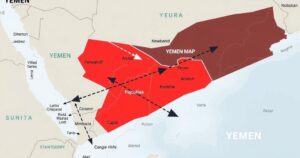Syrian Dictatorship Collapses: Implications for the Region and Future of Governance

Jubilant celebrations in Damascus signify the unexpected fall of Bashar al-Assad’s regime, following a rapid offensive by Turkish and US-backed Islamist forces. The uprising against Assad exposes fundamental weaknesses in his rule and raises questions about future governance. Various factions aim to assert their influence, while the regional power dynamics shift amidst intervention from global powers like Turkey and Israel. Ensuring representation for the Syrian populace will require grassroots organizational efforts as new complexities emerge in the post-Assad landscape.
Recent events in Syria have seen jubilant crowds in Damascus celebrating the unexpected fall of Bashar al-Assad’s regime. This rapid change was spearheaded by Turkish and US-supported Islamist forces, marking a significant shift in the power dynamics within the region. The collapse of the Syrian army indicates that the Assad regime lacked support from both the local populace and imperialist allies. The aftermath raises concerns about who will truly represent the Syrian people moving forward, as Islamist forces and imperialist agendas dominate both sides of the conflict.
The Syrian uprising in 2011 revealed deep-seated opposition against Assad’s brutal dictatorship but lacked a unified leadership to effectively challenge his regime. The emergence of Islamist militias following the regime’s violent crackdown transformed the opposition landscape, but these factions do not embody the democratic aspirations of the early protesters. Consequentially, the ensuing civil war has claimed over half a million lives and displaced millions as the struggle for power continues.
With Assad deposed, uncertainties loom regarding the future governance of Syria. The Islamist faction Hay’at Tahrir al-Sham (HTS) currently holds significant sway, but various militias may vie for power. A cautious demeanor is expected from the new regime in light of the prevailing mood of liberation among the populace, yet the lack of genuine representation remains a pressing concern.
The regional repercussions of Assad’s fall are profound, particularly in the context of the US-China rivalry. Iran’s influence and Russia’s foothold in the region have diminished, bolstering Turkey and Israel’s positions temporarily. The actions taken by these nations following Assad’s deprecation underscore a reconfiguration of power that could have lasting international ramifications.
The ongoing conflict and complex relationships between various groups in Syria echo lessons from Egypt’s post-Mubarak experience. Without decisive leadership from grassroots movements, counter-revolutionary forces can regroup and exert influence. The Assad regime’s collapse risks creating a power vacuum that may precipitate further violence and instability.
Netanyahu’s government views Assad’s downfall as an opportunity to weaken Iranian influence, which has already led to increased military activity from Israel against Syrian targets. At the same time, Turkey continues to seek strategic advantages, focusing on containing Kurdish forces while establishing Islamist control in the region. The interplay of these international interests complicates the possibility of a peaceful resolution.
The imperative for unity amongst workers and the oppressed has never been clearer. Self-organization across ethnic and religious lines is critical in the face of the newly established regime, which has yet to demonstrate democratic intent. Cross-ethnic coalitions and grassroots efforts can provide pathways toward meaningful change, but skepticism remains about the promises made by newly ascendant Islamist leaders.
Historical parallels emphasize the need for vigilance against the systemic economic exploitation and military power that perpetuate ongoing crises in the region. The suppression of workers and oppressed peoples is entrenched in global capitalist dynamics, necessitating mass mobilization led by a revolutionary movement. The transition towards a democratic and socialist Syria will require concerted efforts to address the needs of all citizens.
The current turbulence in Syria stems from years of compounded conflict, beginning with widespread protests against the Assad regime in 2011. These protests erupted amidst the region-wide Arab Spring, targeting systemic oppression and economic grievances. The fall of the Assad regime, previously seen as insurmountable, now poses critical questions about the future governance of a region ravaged by war and mismanagement. Observers note that without the development of cohesive grassroots leadership, any emerging power risks emulating the same failures as previous regimes. This backdrop of civil strife and international maneuvering contributes to the complex landscape faced by the Syrian populace.
The fall of Assad’s regime marks a pivotal moment in Syrian history, yet this development is fraught with uncertainty regarding the future governance of the nation. Islamist groups, while currently ascendant, do not inherently represent the democratic aspirations of the people. The risk of further conflict looms as various factions vie for control amidst broader geopolitical shifts and an increasingly fragmented landscape. True progress will demand organized efforts from workers and oppressed communities to ensure that their voices are heard and their rights upheld in what lies ahead.
Original Source: www.socialistalternative.org








